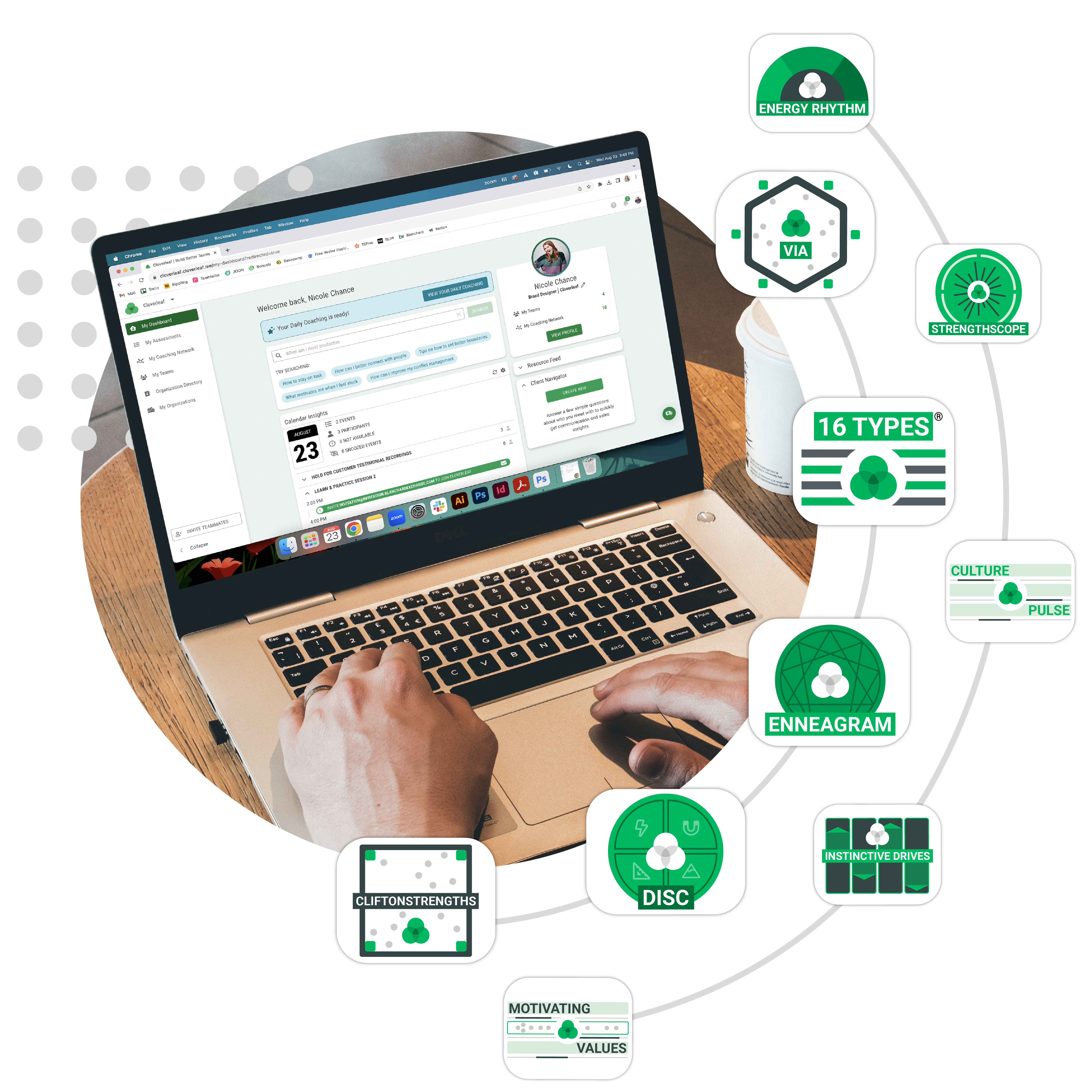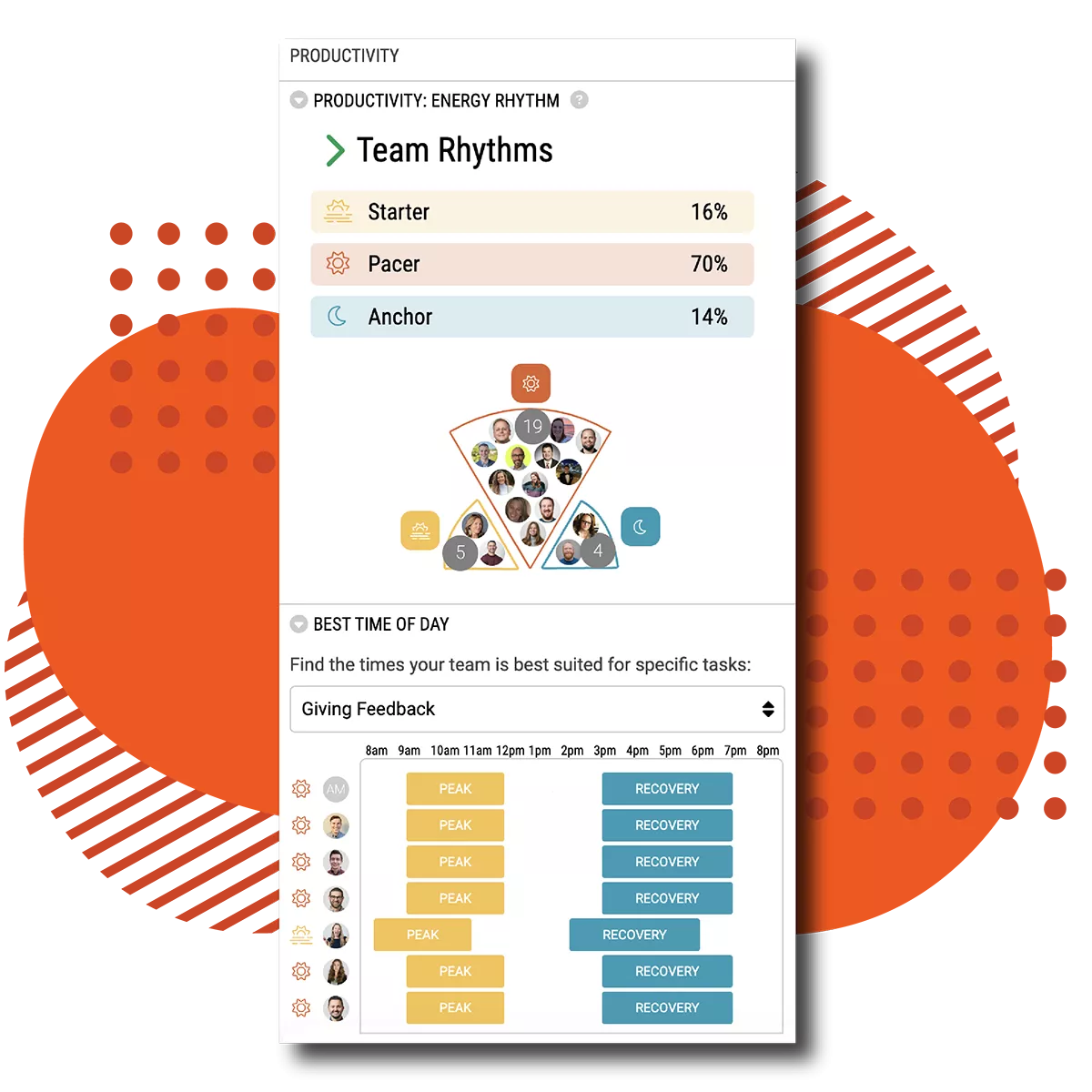Let’s face it. We’ve all had conflicts in the workplace. Whether they are small or large, conflicts are a natural part of work and unavoidable. Even the most favorable environments will occasionally end up with team members who are at odds with one another. However, when teams view conflict with the right perspective, they can use it as an opportunity to improve communication, interpersonal relationships, and the culture of the organization.
Successful conflict management as a manager can go a long way towards realizing these benefits By understanding and implementing effective conflict resolution strategies, managers and leaders can foster a work environment that thrives on diverse perspectives and ideas without letting disagreements hamper productivity.
What is Conflict Resolution And how does it work?
Conflict resolution in the workplace is a process that two or more parties can follow to find an amicable resolution to their disagreement. The process can be formal or informal. And, keep in mind, Aas a manager, your company may have a defined conflict resolution process in place for you to implement.
In conflict resolution, every step you undertake is aimed at addressing disagreements, whether it’s between you and a direct report or among team members. Effective compromise is a hallmark of strong leadership. Successful conflict resolution can be broken down into:
- Identifying the Root Causes of the conflict
- Crafting Effective Solutions to address these causes
- Leveraging Conflict Management Tools
By gaining experience in these three domains, you’re well-equipped to navigate any disputes that arise in your professional journey. This expertise will cement your reputation as a fair mediator, adept at crafting balanced solutions for various conflict scenarios.

Want To Equip Your Managers To Lead Effectively?
- Close the gap between learning and on-the-job application
- Personalize growth to individual strengths and needs
- Equip your managers to lead in the flow of work
- Scale human skills that accelerate teamwork
- Prove the ROI of your talent development programs
7 COMMON TRIGGERS OF CONFLICT IN THE WORKPLACE
Understanding the root causes of conflict is pivotal for people leaders when equipping managers with the tools and strategies to handle disputes adeptly. The factors influencing disagreements can range from interpersonal dynamics, age demographics, and industry-specific stressors to external personal pressures.
Here’s a deep dive into some prevalent conflict triggers, coupled with actionable insights for managers:

1. Poor Communication
Often, poor communication skills are one of the main causes of conflict. When people disagree on policies, procedures, schedules, tasks, and other details, it can easily escalate into an argument that strains relationships and decrease collaboration among teammates.
You may also see employees who have a difficult time communicating with their coworkers and may come off as aggressive or passive-aggressive. Sometimes trying to talk with one another is an exercise in frustration. If the company has inefficient or obsolete communication tools, this only adds to the stress when trying to convey information effectively.
2. Unclear Expectations
Every team member needs to understand their expectations, or their assumptions can lead to unseen conflict. Suppose two staff members have wildly different expectations about who is responsible for what, the tasks that are priorities, and the time required to do each item on the list. Varied assumptions among team members inevitably sow the seeds of conflict. Differences in perceived responsibilities, task priorities, or expected timelines can lead to issues. Regular alignment meetings, clear role definitions, and consistent feedback loops can keep everyone on the same page.
3. Unrealistic Workloads
Long stints of overtime or being in crunch mode constantly will wear people out, even high-potential employees. When employees are unable to take a long-term look at a project or the tasks they’re doing, they have to operate in the moment at all times, without a minute to catch their breaths. The burnout from project stress can create a workplace ripe for conflict. You may see that people are short-tempered, aggressive, frustrated, and have poor judgment. If you’ve reached burnout and want to heal, check out the 5 Stages Of Burnout Recovery to learn more.
4. Personality Issues
Every individual is unique, bringing their distinct personality, experiences, and aspirations to the team. Sometimes, you may observe certain personalities, such as two highly competitive team members, seemingly at odds with each other. However, the beauty of diverse teams lies in their potential to harness these differences.
On some occasions, strong personality clashes might give the impression of a challenging work environment. However, challenges present an opportunity for growth. Understanding and respecting individual preferences and aligning strategies can transform potential conflicts into avenues for teamwork and productivity.

Leverage Behavioral And Strength-Based Assessments For Greater Self-Awareness In Your Organization
Tools for assessment and personal growth can be pivotal when personality issues arise. These resources can aid individuals in recognizing their areas of expertise and areas for improvement, offering insights into varied approaches to work and communication.
5. Defensive Dispositions
Some employees may take constructive criticism and other forms of feedback as a personal attack. When their work or ideas don’t get the expected reaction, they may take a defensive stance and argue about why they’re right. Managing conflict means reassuring the person that the feedback is intended to help, not hurt them. One tool that can help leaders provide customized, accurate feedback is DISC. To learn more, check out the post: Leveraging DISC Profiles For Effective Work-Related Feedback.
6. Inconsistent Procedures
How often do workflows, policies, and procedures help change your organization? If employees need to relearn how to do basic work tasks regularly, they’ll never figure out a routine that works best for their productivity. Misunderstandings about new ways of doing things can lead to conflicts without a good solution, especially if the new policies can be interpreted in different ways.
7. Concerns About The Past Work Experiences Repeating
Employees’ perspectives are not based solely on their workplace experience. People bring all of their professional and personal histories with them, which can influence how they respond to conflict. Toxic work environments, abusive coworkers and bosses, and other bad experiences can lead someone to react poorly in conflict situations. As a manager of people, understanding that your team members are whole people can help you create a workable solution for everyone involved.
By understanding these triggers and equipping managers with strategic solutions, people leaders can pave the way for a harmonious, productive, and progressive workplace.
14 Conflict Management Tips For Managers & Leaders
Successfully navigating conflicts hinges on possessing the right set of skills. As a manager or leader, having these tools in your toolkit allows you to adapt and respond aptly to diverse situations. Conflict resolution isn’t a one-size-fits-all approach. It’s a dynamic process that takes into account individual relationships, team dynamics, and the broader organizational context.
People react to conflict differently: some vent their frustrations and then move on, while others ruminate on disagreements, letting them taint future interactions and potentially fostering a passive-aggressive work environment. Employing the right management skills and solutions is crucial to addressing such issues head-on.
Below, discover the leading methods and skills to effectively resolve workplace conflicts.

1. IDENTIFY THE SOURCE OF THE CONFLICT
To effectively resolve a disagreement, it’s crucial first to understand its origin from all involved parties’ viewpoints. Grasping the underlying issues paves the way for constructive solutions and resolutions.
2. ADOPT A POSITIVE PERSPECTIVE ON CONFLICT
How you perceive conflict can greatly influence its outcome. If you see it merely as a time-consuming hurdle or an inevitable downside of teamwork, you risk escalating issues, whether through neglect or mishandling. Instead, embrace conflict as an opportunity to gain deeper insights into your team’s dynamics, needs, and reactions. It’s an avenue to bolster employee engagement and fine-tune team direction. Prioritize understanding your team’s individual work styles and motivations—doing so can provide invaluable context during conflict resolution.
To dive deeper into understanding your team’s preferences and motivations, watch how Cloverleaf can help you.
3. Practice Active Listening
Truly understanding an issue requires genuine listening. Make it a point to deeply hear out the parties involved, seeking clarity through thoughtful questions. Recognizing potential external influences or uncharacteristic behaviors can be key. Your primary role at this stage is to ensure everyone feels acknowledged. Once you’ve thoroughly gathered insights from all sides, you’ll be better equipped to formulate a conflict resolution strategy.
4. Facilitate Productive Conversations
An aspect of listening requires assuming the role of guiding a constructive conversation. Encourage individuals to articulate their experiences and feelings, as this can often unveil miscommunications or the root causes of the disagreement. Strategic questioning can further propel the discussion, steering all parties toward a mutual resolution.
5. Use Empathy
Understanding isn’t just cognitive—it’s emotional. Strive to genuinely feel the emotions and perspectives of those involved. By aligning with their sentiments and ensuring they know their feelings are recognized, you build trust and openness, which are essential for effective conflict resolution.
6. Serve As A Mediator Between Team Members
Effectively mediating conflicts between team members is a hallmark of adept leadership. Facilitating a calm and open environment where aggrieved parties can communicate is paramount. Successfully mediating helps address issues head-on, preventing them from snowballing into larger challenges.
7. Take Accountability For Your Words And Actions
Should you find yourself at the center of a conflict, taking ownership of your actions is crucial. Even unintended missteps can escalate situations; acknowledging them is the first step toward resolution. Demonstrating this level of responsibility paves the way for others to adopt a constructive approach to conflicts.
8. Be Transparent And Open
Prioritizing transparency is pivotal in conflict management. By being clear and open about your decision-making processes in resolving disputes, you can sidestep potential claims of favoritism or bias. Regularly update all involved parties about the status of the resolution, reinforcing an atmosphere of trust and understanding.
9. Genuinely Engage In The Process
Your team seeks authenticity, not a rehearsed dialogue. Address issues by tuning into the specifics of each situation and the individuals involved. Tailor your methods to acknowledge and address each individual’s unique circumstances and conflict resolution styles.
10. Frame Discussions With Objectivity
When discussing conflict, anchor conversations in facts rather than emotions. For instance, state, “Our objective is to reach a consensus on the printer’s location.” By centering on the clear end goal, you streamline the resolution process and align everyone’s focus toward a common target.
11. Incorporate Change Management Into Your Culture
Should disagreements stem from changes in workplace protocols or systems, prioritizing robust change management is key. Change management isn’t merely about implementing shifts but ensuring smooth transitions. This involves equipping employees with the necessary training, clarity about updates, and platforms to voice their feedback, ensuring they’re not just bystanders but active participants in the change.
12. Use Emotional Intelligence
Emotional awareness not only aids in understanding your team’s underlying feelings and sentiments but also gauges their satisfaction with resolutions. Furthermore, this quality enhances workplace relationships, often distinguishing effective leaders who genuinely connect with their teams.
13. Evaluate How Things Are Going
Consistently engage with the individuals involved in the conflict. Regular check-ins offer an accurate pulse on their feelings and provide an avenue to ensure conflicts remain resolved.
14. Recognize When To Make Tough Decisions
There are instances where reconciliation seems unattainable. Persistent arguments, underlying tension, or disruptive behavior can deteriorate the workplace atmosphere. In such cases, it may be necessary to consider reassigning individuals or, in extreme situations, making the difficult decision to part ways with an employee to maintain a positive work environment.

4 Step CONFLICT RESOLUTION GUIDE
Navigating conflict resolution can be challenging, especially if you’re unfamiliar with the terrain. To guide you, here’s a structured approach to mending bridges:
- Demonstrate Understanding: Make it clear that you comprehend their perspective and concerns.
- Acknowledge Your Role: Admit and recognize your contribution to the disagreement.
- Express a Desire for Resolution: Emphasize your commitment to finding common ground and resolving the issue together.
- Revisit the Conversation: If immediate resolution isn’t achieved, give it some time and approach the topic again later.
7 Proactive Strategies To Prevent Conflict In The Workplace
While addressing and resolving conflicts is crucial, proactively preventing them can lead to a more harmonious and productive workplace. Instead of merely firefighting, the key lies in fostering an environment where potential conflicts are nipped in the bud. By equipping your workspace with the right tools, training, and resources, managers can pave the way for smoother interpersonal relationships and minimize disruptions.
1. Utilize Communication Channels:
Efficient communication is paramount. Embrace tools that facilitate open communication, whether they’re software-based, like emails, chat applications, or video conferencing.
Explore the Cloverleaf integrations with everyday tools. Find out more here.
2. Prioritize Availability
Reflect on your daily schedule. Is there a dedicated window where team members can reach out to you directly about potential issues? Ensure a consistent open discussion slot, signaling your team that their concerns are valued.
3. Proactively Address Pending Conflict
With the right systems for conflict resolution in place, preemptively identify and address budding tensions. Recognizing early signs of discomfort can drastically reduce the negative impact on the team’s dynamics.
4. Prioritize Team Engagement
Regular team interactions can cultivate stronger bonds, whether through meetings or casual team lunches. Creating spaces for open dialogue often defuses tensions before they escalate.
5. Champion Fairness
Favoritism can erode trust. Ensure you treat every team member equitably, fostering an environment of mutual respect. For more on this, check out the post: How To Address Unconscious Bias In The Workplace.
6. Address The Elephant In The Room: Avoiding issues only leads to mounting tensions. Address the proverbial “elephant in the room” head-on, ensuring issues are dealt with transparently and reinforcing your credibility as a leader.
7. Leverage External Insights And Coaching
Sometimes, an outside perspective can offer invaluable insights into internal conflicts. Consider integrating third-party coaching services, like Cloverleaf, which combines personalized coaching with data-driven analytics, offering a comprehensive solution for conflict resolution.
How Does Cloverleaf Help?
If left unchecked, team conflicts can precipitate a cascade of challenges within an organization. Effective conflict management, therefore, isn’t just a responsibility—it’s an imperative for managers. Enter Cloverleaf, a dynamic solution tailored to preempt, navigate, and resolve conflicts, fostering healthier team interactions and stronger organizational dynamics.

Core Conflict Management Solutions Delivered by Cloverleaf:
1. Anticipating Team Friction: Instead of reacting to conflicts, Cloverleaf enables proactive measures by helping you understand the sources of conflict for every person on your team.
2. Navigating Internal Blind Spots: When internal tensions rise, seeing the overarching issues is challenging. Cloverleaf offers an external lens, bringing clarity and solutions that might be missed from an inside viewpoint.
3. Bespoke Conflict Strategies for Unique Teams: Every team is distinct, and cookie-cutter solutions often fall short. Cloverleaf customizes its approach by merging assessment data and conflict resolution coaching, ensuring that strategies resonate with your organization’s specific needs.
4. Unearthing Deep-Rooted Conflict Triggers: Addressing surface-level issues without understanding the root causes is akin to applying a band-aid on a deep wound. Cloverleaf dives deep to unearth the real reasons behind conflicts, ensuring sustainable resolutions.
5. Skill Enhancement for Modern Managers: Beyond just resolving the current conflict, Cloverleaf’s Automated Coaching™ provides actionable insights, preparing managers for future challenges, enhancing communication, and fostering a culture of continuous learning and improvement.
6. Transforming the Narrative on Conflict: Instead of being seen as roadblocks, conflicts can be growth catalysts. Cloverleaf repositions the perception of conflict, making managers not just problem solvers but also enablers of team evolution and personal growth.
Final Thoughts
Effective conflict management is about addressing disputes and fostering a proactive, transparent, and emotionally intelligent workplace culture. With tools like Cloverleaf, organizations are empowered to navigate conflicts and prevent them, ensuring teams remain cohesive, productive, and harmonious. As managers and leaders, embracing both preventive and corrective strategies ensures a dynamic, engaged, and resilient team capable of driving unparalleled success in any industry.



